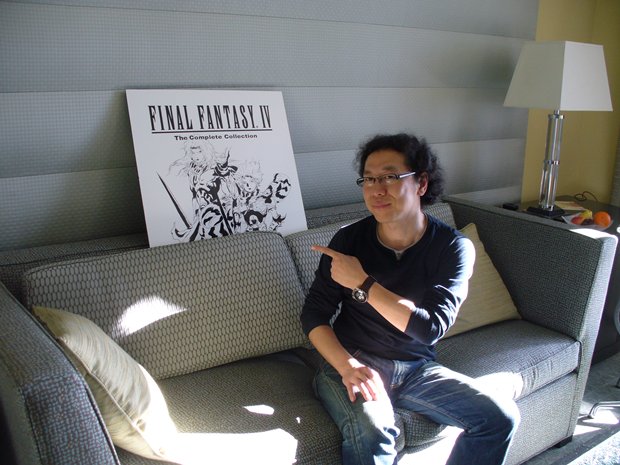Takashi Tokita on the legacy of Final Fantasy IV
Celebrating twenty years of spooniness
Final Fantasy IV is returning once more in a very big way this April. Final Fantasy IV Complete Collection is a compilation of the original game, the post-game tale The After Years, and an all-new original Interlude story, all with enhanced visuals and sound. This edition has been carefully overseen by original lead designer Takashi Tokita, one of Square-Enix’s most experienced employees.

Since joining the company in 1985, Tokita has assisted in the creation of many memorable titles: Chrono Trigger, Parasite Eve, and the recent 4 Heroes of Light all bear Tokita’s handiwork. But his most storied, beloved, and historically significant work remains Final Fantasy IV. On the eve of the game’s 20th anniversary, we sat down to talk with Tokita a bit about one of the greatest RPGs of all time.
GamesRadar: You have been with Square – now Square-Enix – for a very long time. Clearly, you have a very long history with FFIV. So I have to ask: why do you think it’s worth revisiting so many times?
Takashi Tokita: FFIV probably has the most remakes of any FF title, yes… The reason, I’d say, is because FFIV was made after the original batch of games on the Famicom (FFI, II, and III). To that end, FFIV implements a lot of elements from each of the previous titles, becoming sort of a “best of” compilation of those. It also set the standard for the series from that point forward. Because it has such a strong history, we’ve wanted to make it available on every platform. That way, we can reach out to new customers, as well.
GR: So what has changed at Square-Enix since the time you first worked on FFIV? Obviously, the company is bigger and differently structured these days. What’s different about working on the game now as opposed to how it was approached back when you first created it?
TT: Of course, the organization has grown a lot bigger. When we merged with Enix, the people who were once our arch-rivals with the Dragon Quest series became our co-workers. I think the big difference is that back in the days of the Super Famicom, the Japanese game industry was at its peak. We can’t say the same thing today. There are so many different platforms, control schemes, and genres out there, and consumers have far more choices as a result. During the 16-bit era, it felt like time moved much more slowly, as far as technological advances are concerned. Of course, the lack of the internet meant that communication took a lot longer, as well. The power of the individual was a lot stronger as a result.
GR: When you first made FFIV, did you ever imagine yourself coming back to it to continue the story? For the longest time, every FF game was a self-contained story with no spinoffs or extensions.
Sign up to the GamesRadar+ Newsletter
Weekly digests, tales from the communities you love, and more
TT: Of course, I never originally expected it to happen. But over the course of working on the various editions of the game, I began to feel that it would be fitting to do something like this.

GR: So what was the impetus for creating The After Years?
TT: As I was working on the DS version, the mobile team had proposed an idea of doing something episodic – something like monthly character chapters. I figured that right after fans played the DS version, if they could play something immediately afterwards with little wait involved, it would be nice. Mobile was the best option at the time because of the short development time, but we brought it to WiiWare later.
GR: By today’s standards, FFIV’s narrative is fairly simplistic. But there’s something about it that continues to resonate with people, even though it lacks the more sophisticated plot of modern RPGs. What do you think it is about the story that gives it such staying power?
TT: Yes, it is a pretty simple story, but I think what gives the story such appeal is the wide variety of characters featured. We have a wide range of ages and backgrounds in the game for both male and female, and players can relate to that. You see that a lot in a lot of popular Japanese media – I think Japanese developers do a good job of having a lot of side characters alongside a main character, but having everything work together well in the overall story.

GR: There’s a subset of FF fandom that thinks that the 16-bit games were the pinnacle of the series, and that Square-Enix will never be able to make anything as good as those ever again. What are your thoughts on that line of thinking?
TT: Well, the specs of the technology powering games have certainly increased since then, and that’s part of the reason why the games have been changing. But nowadays, I think that there’s more of a focus on high-concept stuff. In the movie industry, for a long time, they were focusing too much on effects and visual flair. Eventually there was a bit of a backlash towards that, and people began to move back towards the conceptual, “indie” type movies. I guess there are similar feelings towards us from some players, as well…


